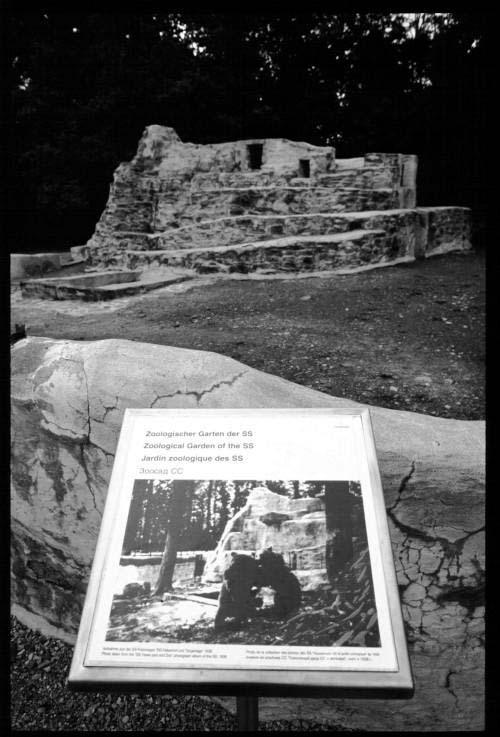MOSCOW, April 13 — President Mikhail S. Gorbachev today gave President Wojciech Jaruzelski of Poland cartons of documents that the Soviet leader said “indirectly but convincingly” proved that the Soviet secret police killed thousands of Polish officers in Katyn Forest in the spring of 1940.
Continue readingAuthor: Webb
Gorbachev documents Soviet guilt at Katyn
MOSCOW — President Mikhail S. Gorbachev, seeking to defuse the single biggest issue poisoning relations between the Soviet Union and neighboring Poland, gave Polish President Wojciech Jaruzelski documents Friday that showed that Soviet secret police killed thousands of Polish army officers during World War II and buried them in mass graves in a Russian forest.
Continue readingHow to make soap from humans
[This file was found on the Nizkor site, presumably as partial proof of Holocaust claims.]
The following information comes from Gdansk: National Identity in the Polish-German Borderlands, by Carl Tighe (Concord, MA: Pluto Press, 1990), pp. 173-177:
IDEAS & TRENDS; Auschwitz Revisionism: An Israeli Scholar’s Case
AT Auschwitz, it is inscribed in stone: four million people died in the Nazi camps. But Yehuda Bauer, one of the foremost historians of the Holocaust and a sworn enemy of those who deny its reality, says that the number of victims was less than half that.
Auschwitz and the Poles fighting the distortions
Israel TV has followed the BBC, the curator of the [Auschwitz] museum, Kazimierz Smolen, and now also Netanel Lorch (The Jerusalem Post, September 3) in falling into the trap of claiming that four million people died in Auschwitz. Indeed, that is the figure engraved in stone in Auschwitz itself, and our Israeli pundits accept it without bothering to check.
Questioned Holocaust, historian badly beaten
A leading French revisionist historian who denies that millions of Jews were killed in the Holocaust was recovering from surgery yesterday after a savage beating.
Continue reading
‘Instantaneous’ Two-Day-Long Gassings
Found in: Carlo Mattogno, “The First Gassing at Auschwitz: Genesis of a Myth,” The Journal of Historical Review, Vol. 9 number 2.
“3. The Duration of the Gassing
“Rudolf Höss declared that, on the occasion of the first gassing accomplished by his deputy Fritzsch, the Zyklon B provoked ‘the immediate death’ (den sofortigen Tod) of the victims. (fn 20) The article in the Polish Fortnightly Review reports instead that ‘all the prisoners died during the night. All night the rest of the camp was kept awake by the moans and screams originating from the shelter.’ Finally, the Polish Investigation Commission asserts that ‘next afternoon’ some prisoners were still alive, ‘therefore further cyclon was poured out and the doors again tightly closed, to be reopened the next evening, when all the prisoners were dead.’ Therefore, all the victims died immediately, or during the night, or two days later.”
The ordinary Auschwitz tourist
AUSCHWITZ: Technique and Operation of the Gas Chambers
Jean-Claude Pressac
Page 537
www.mazal.org/Pressac/Pressac0537.htm
[…]
Any normal human being, visiting the Auschwitz camp for the first time, feels a deep emotional shock. The weight of history allows of no other response. An ordinary but motivated tourist, I nearly did away with myself one evening in October 1979 in the main camp, the Stammlager, overwhelmed by the evidence and by despair. […]
[…]
© 1989, The Beate Klarsfeld Foundation
Extermination by bear and eagle at Buchenwald
Time ‘Too Painful’ to Remember
The Golden Age Club in the basement of an upper Manhattan synagogue was abuzz with gossip, laughter and the shuffle of cards when the rabbi, himself 79 years old, struck a spoon against a metal ash tray to get everyone’s attention.
In the [Buchenwald] camp there was a cage with a bear and an eagle. Every day they would throw a Jew in there. The bear would tear him apart and the eagle would pick his bones.”
Source:
ARI L. GOLDMAN
New York Times New York, N.Y.
Nov 10, 1988
pg. A10, 1 pgs
Webmaster note: This story was revealed by Morris Hubert, who claims to have been an internee at Buchenwald (November 10, 1988). Perhaps he was thinking of the zoo at Buchenwald.

A Distinguished Professor Comments on Holocaust Claims
Sources for the Gas Chambers Are Rare and Unreliable
Continue reading
